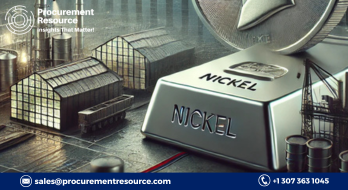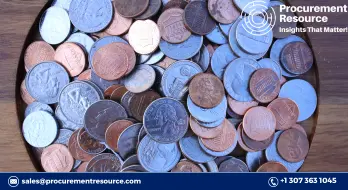Nickel prices witnessed an uptick in April’24 amid weaker supply sentiments
.webp)
Nickel prices have been increasing across the globe over the past few months, and April witnessed the ongoing increasing trend for the nickel prices. The prevalent reason to this significant uptick could be attributed to a series of geopolitical and economic factors that indicated a supply disruption.
The surge was largely triggered by sanctions imposed by the United Kingdom and the United States against new Russian supplies of this critical industrial metal. These sanctions, which were announced in mid-April, effectively banned the delivery of newly produced Russian nickel to major trading platforms such as the London Metal Exchange (LME) and the Chicago Mercantile Exchange.
The sanctions specifically targeted nickel produced in Russia after April 13, prohibiting it from being stored in LME warehouses. However, nickel produced prior to this date was still allowed to enter these facilities, though under a separate category. This measure not only restricted the direct supply of Russian nickel to these exchanges but also prompted Russian companies to quickly reposition their existing inventories. (Experts believed that the sanctions could lead to a reshuffling in the global metal trade, with countries like China, India, and Turkey potentially absorbing the nickel supplies shunned by Western consumers.)
The broader economic factors influencing the global nickel market also played a significant role in the metal's price dynamics. The anticipation of a market deficit, coupled with a positive outlook for global demand on industrial metals and weakening nickel supplies, added to the upward price pressure.
China’s role in substantiating the increase in Nickel prices
Nickel prices recently surged not only due to international sanctions but also due to significant buying activity from China. Market speculation suggested that China's National Food and Strategic Reserves Administration planned substantial purchases of nickel pig iron (NPI), essential for stainless steel production. This expected increase in state stockpiles, combined with concerns over tightening supplies from Indonesia, a key nickel producer, drove prices upward. Reports indicated that China sought to acquire between twenty thousand to two hundred thousand tons of NPI, containing about 10% nickel on average.
The downstream stainless-steel industry in China kept the price surge a little bound
Despite the rise in nickel prices, the trading sentiment within the stainless-steel industry remained cautious. Buyers resisted price increases due to the ongoing weakness in downstream sectors, notably in China's property market, which saw a significant drop in new housing starts.
Read More About Nickel Production Cost Reports - Request Free Sample Copy in PDF
Stainless steel CRC deals were concluded with only modest price hikes of 100-150 yuan per tonne. Additionally, Indonesian exporters, reacting to the sanctions on Russian metals, raised their export prices, which further dampened interest among East Asian buyers. This cautious sentiment was reflected in the minimal rise in domestic prices in China, which increased by merely $15-20 per tonne, contrasting sharply with the $90-100 per tonne increase in import prices.




